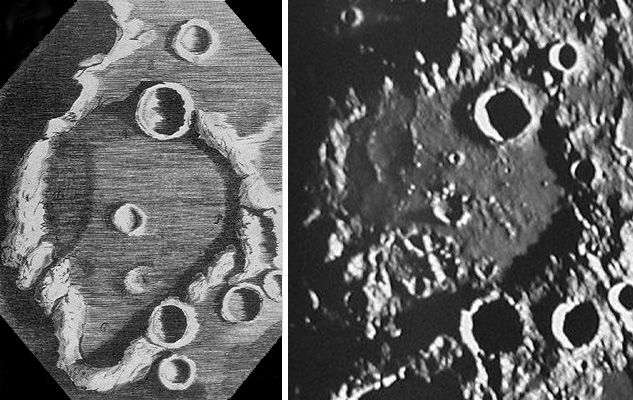January 31, 2015
Hooke & Hipparchus
Originally published January 31, 2004
Image Credit: Ingenious Pursuits & Consolidated Lunar Atlas |
|
Hooke & Hipparchus The earliest drawings of the Moon were of the entire body. By 1665 Robert Hooke, the English rival of Isaac Newton, published (in his Micrographia) the first drawing of a single feature, and it was remarkably accurate. The comparison of Hooke's drawing of the 150 km wide crater Hipparchus with a modern photo taken with a 61" telescope (Consolidated Lunar Atlas sheet E10) shows that Hooke correctly drew many details including two mountainous ridges at the bottom left. Hooke also shows a shadowed arc on the left side of Hipparchus that represents part of a ghost crater and various small hills. Hooke make this drawing with a 30 ft focal length telescope but he never gave the diameter of its lens. He was a very keen-sighted observer, discovering that Jupiter rotates and discovering Syrtis Major on Mars. Hooke was one of the most versatile scientists of the 17th century - I eagerly await the new biography of him by the wonderful author Lisa Jardine. Related Links: Tomorrow's LPOD: Theophilus |
Author & Editor: Technical Consultant: A service of: |
COMMENTS?
Register, and click on the Discussion tab at the top of the page.
You can support LPOD when you buy any book from Amazon thru LPOD!
Contributions to http://www2.lpod.org/ are licensed under a Creative Commons Attribution No-Derivative-Works Non-Commercial 3.0 License. 




